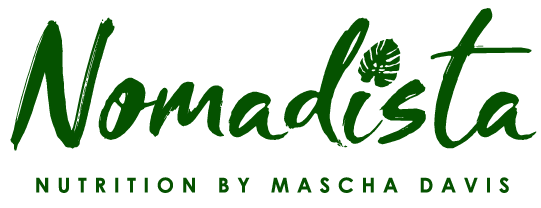In this post we cover a new way of eating, the Planetary Health Diet. This eating style promotes an intake of nutrient dense food and a diet that is good for both people and the planet.
Why should we care about eating for the environment?
Over the recent years, our planet's climate crisis has only become more severe. While there are a lot of different contributing factors, food production plays a large role. In fact, it's responsible for up to 30% of the global greenhouse gas emissions. In particular, the production of red meat has the highest ecological footprint compared to all other food groups.
For an individual person, taking action to combat the climate crisis can feel overwhelming. You may feel like there aren’t many things you can do to help. In this post we are going to break down simple steps you can take to support a healthy ecosystem by making simple changes to what's on your plate.
The changes you make don’t need to be all or nothing. Small changes made by a lot of people have a large impact. One style of eating, the Planetary Health Diet, provides guidance on how to alter your plate to make it more eco-friendly.
What is included in the Planetary Health Diet:
Plant Protein. The main emphasis of this diet is to add in more plant protein. Examples of plant protein sources include: tofu, tempeh , soy milk, edamame, lentils, beans, peas, nuts, nut butters, seeds (chia, hemp) and nutritional yeast. About ¼ of your plate (about the size of your palm) should be plant protein.
High Fiber Carbohydrates. Carbs are the body's preferred energy source. This diet emphasizes adding in foods like quinoa, oats, brown rice, buckwheat and other whole grains. Potatoes and sweet potatoes are recommended as well, but in smaller amounts. It’s also recommended that less than 5% of energy comes from sugar.
A Variety of Fruits & Non-Starchy Veggies. The more colors on your plate, the better! These foods are high in fiber and antioxidants which support optimal health. Aim for 5-7 servings each day.
Omega-3 Filled Fish. Fish is also a part of this diet and can be included 2-3 times/week. Higher omega-3 fatty fish like salmon, trout, tuna, anchovies, herring, mackerel and oysters are recommended.
Unsaturated Fats. This includes things like olive oil, peanut oil, avocados, avocado oil, and various nuts and seeds. Saturated fat, found in foods like butter, cheese, and fattier meats like bacon and sausage, should be limited to no more than 11.8 grams/day.
Limit Processed and Red Meat. Due to its higher ecological footprint, this is one of the main food groups that is limited. The recommendation is to consume no more than 98 grams (or ~4 oz) grams of red meat (pork, beef or lamb) each week.
Dairy is Optional. The recommended intake is 2 cups (0-500 grams)/day. This equals about 2 servings of dairy/week.
Planetary Health Diet vs. Current US Food Guidelines:
Currently, in the United States, MyPlate (seen above) offers a visual for what people should aim their intake to look like at each meal. Lets review how this recommendation compares to the Planetary Health Diet guidelines:
Similarities:
Emphasis on including non-starchy veggies as the majority of the plate
Lower saturated fat dairy is recommend
Choosing mostly whole grains and limit refined grains is preferred
Both recommend plant protein in the protein section
Differences:
MyPlate has a larger recommended portion for grains and dairy
MyPlate doesn’t specify exactly how much protein should be from plant vs. animal sources
MyPlate does not specify which types of fats are recommended
The animal protein section is much more limited in the Planetary Health Plate
The bottom line is that either of these eating styles would support an overall healthy lifestyle. However, if you are looking to eat in a way that specifically benefits the environment, then the Planetary Health Diet is a great choice for you!
Now, to help you apply this to your life, let's take a look at what a day of eating might look like on this diet.
Sample Planetary Health Meal Plan:
Breakfast: Berry Chia Oatmeal
1 cup plain cooked oats (cooked in dairy free unsweetened milk), 1 tbsp chia seeds, ½ cup berries (blueberries, raspberries, etc.), handful of walnuts
Lunch: Salmon Quinoa Power Bowl
3-4 oz cooked salmon, ½ cup cooked quinoa, 1 cup leafy greens, 1 chopped mini cucumber, ½ sliced avocado + 1 tbsp olive oil + fresh squeeze lemon for dressing
Dinner: Tofu Veggie Stir Fry
½ block of pan seared tofu (in peanut oil), 2 cups stir fry veggies of choice (mushrooms, pepper, onions), ½ cup brown rice noodle, 1 tbsp coconut aminos, 1 tbsp sesame seeds
Snacks:
½ cup dried edamame + 1 orange
Smashed raspberries + nut butter on whole grain toast sprinkled with 1 tbsp hemp seeds




